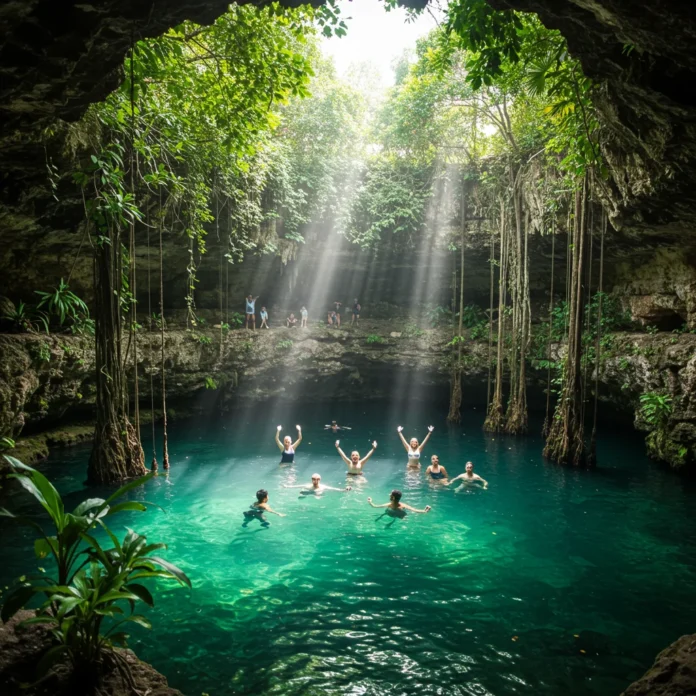Introduction: Why Tulum’s Cenotes Are a Must-Visit
Few places in the world offer the kind of raw, natural beauty found in Tulum’s cenotes. These freshwater sinkholes, scattered throughout the Yucatán Peninsula, invite visitors into a serene world of crystal-clear waters, limestone caves, and lush jungle canopies. Every visit to a cenote provides a unique sensory experience—the cool touch of mineral-rich water, the echo of chirping birds, and the dappled light filtering through ancient trees. It’s no wonder that these natural pools are at the top of so many travelers’ lists when planning a trip to Tulum.
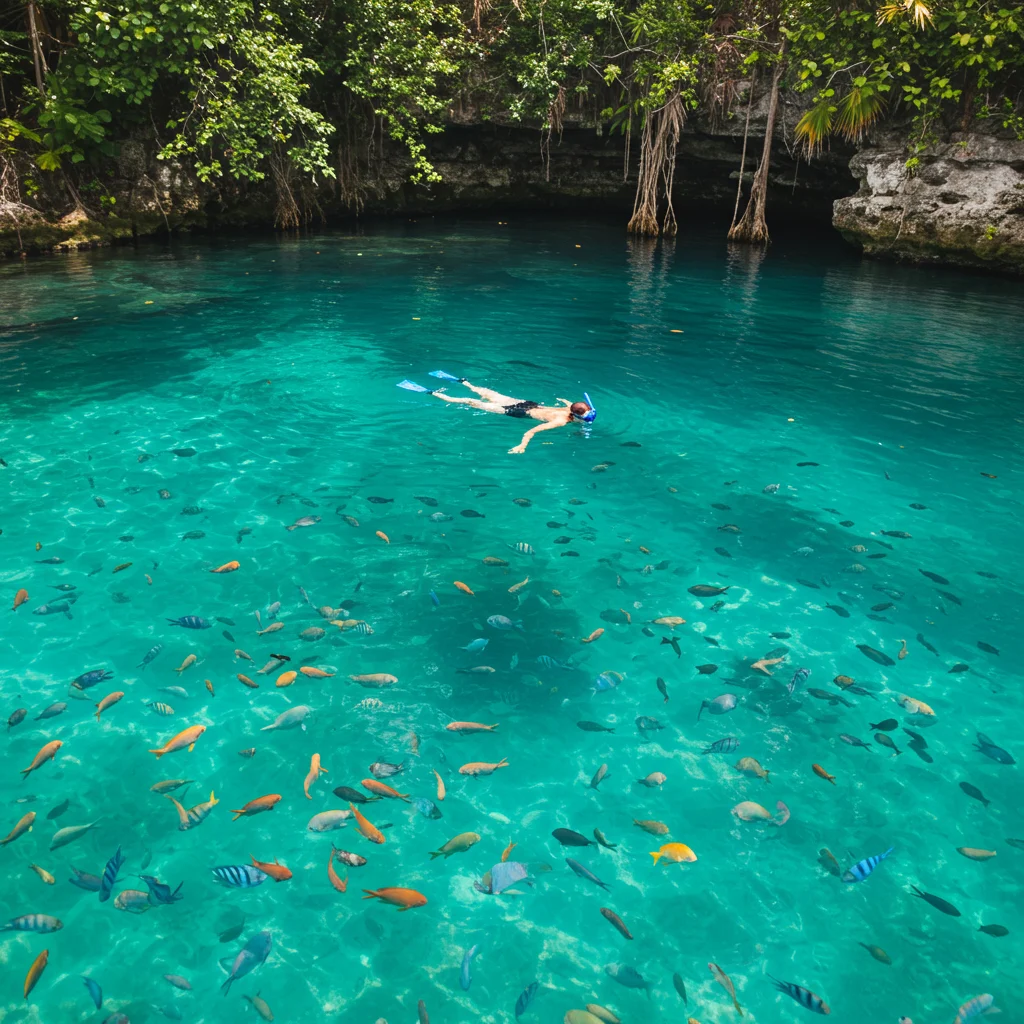
Whether you seek adventure, relaxation, or a glimpse into the region’s deep-rooted history, Tulum’s cenotes deliver an unforgettable escape from the ordinary. Their blend of geological intrigue and cultural significance makes them an essential part of any Yucatán itinerary.
What Is a Cenote? Understanding These Natural Wonders
A cenote is a natural sinkhole resulting from the collapse of limestone bedrock, which exposes the groundwater beneath. These formations are unique to the Yucatán Peninsula and have played a vital role in the region’s ecology and history for thousands of years.
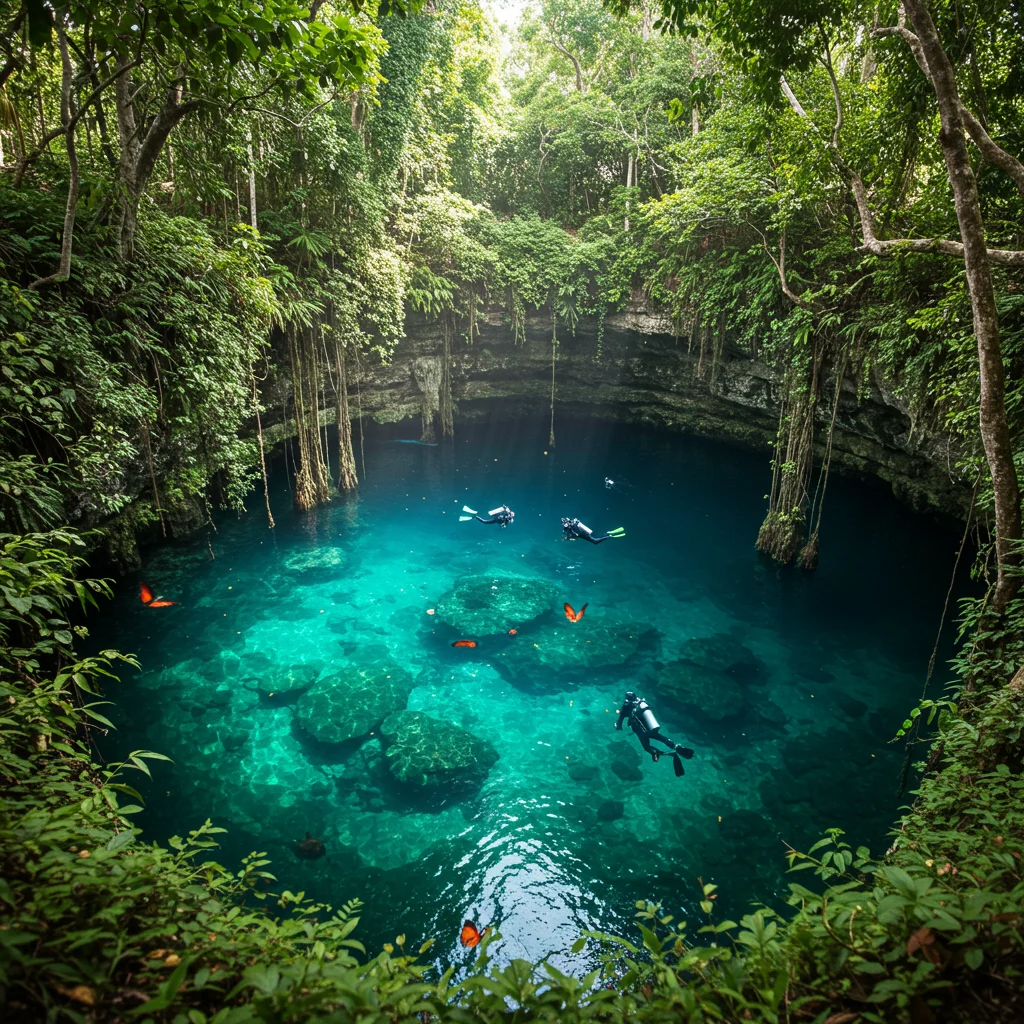
Cenotes range from vast open pools to mysterious underground caverns, each offering a distinct atmosphere and set of activities. Their clear, cool waters provide a refreshing respite from the tropical heat and a window into an ancient world below the surface.
How Are Cenotes Formed?
Cenotes are the result of a slow, natural process. Rainwater, slightly acidic from atmospheric carbon dioxide, seeps through the porous limestone that comprises much of the Yucatán. Over centuries, this water dissolves the rock, creating vast underground rivers and caverns. When a section of the ceiling collapses, a cenote is born, revealing a hidden oasis to the world above.
Types of Cenotes Found Around Tulum
The region surrounding Tulum offers a surprising variety of cenotes, each with its own character. Understanding their differences can help you choose the best cenote for your preferred activities and level of adventure.
Open Cenotes
Open cenotes resemble natural swimming pools, with the cave ceiling having fully collapsed. Sunlight pours in, illuminating turquoise waters and lush plant life along the edges. These are ideal for swimming, lounging, and family outings.
Semi-Open Cenotes
Semi-open cenotes feature a partially collapsed roof, creating dramatic shafts of light that pierce the water below. The interplay of shadow and sunlight here is breathtaking, offering a mystical atmosphere favored by photographers and explorers alike.
Cave Cenotes
Cave cenotes remain mostly enclosed, with only small openings in the ceiling. These are often shrouded in mystery, with stalactites and stalagmites sculpted over millennia. Cave cenotes are perfect for those seeking a more adventurous or meditative experience.
Why Are Cenotes Important to Mayan Culture?
For the ancient Maya, cenotes were much more than geological features. They served as vital sources of fresh water in an otherwise arid landscape and were considered sacred gateways to the underworld, or Xibalba. Ceremonies, offerings, and even sacrifices took place within their depths, highlighting their spiritual importance. Today, cenotes continue to be revered, and many visitors feel a sense of awe and respect when entering these natural sanctuaries.
The Allure of Tulum’s Cenotes for Travelers
What draws travelers from around the globe to Tulum’s cenotes is a rare combination of adventure, tranquility, and natural beauty. The chance to swim in clear, cool water surrounded by jungle and limestone is an experience that lingers long after the trip ends. Cenotes offer a welcome escape from the bustle of tourist hubs, inviting visitors to slow down and reconnect with nature.
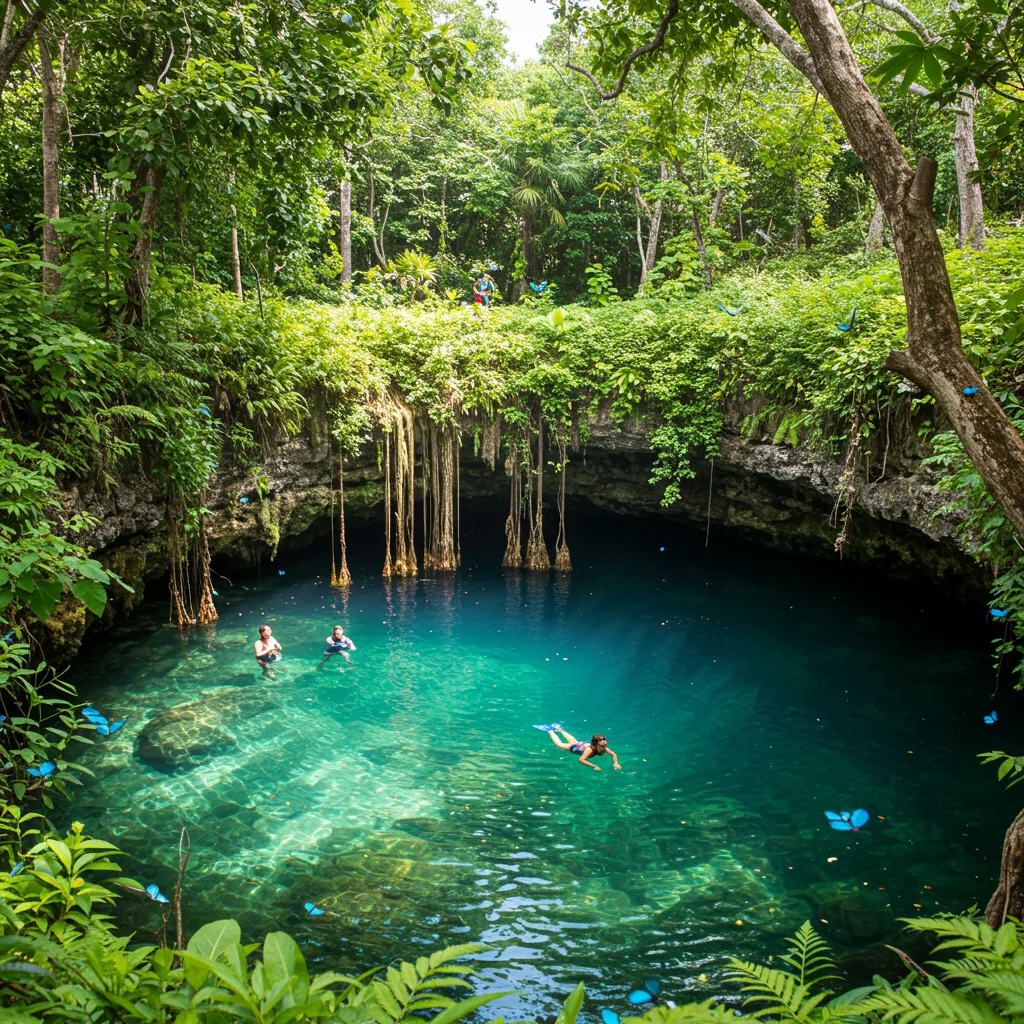
For those interested in combining historical exploration with natural wonders, cenotes provide a fascinating link between past and present. Many are located near ancient ruins, making them perfect additions to a day of cultural discovery, as discussed in our post on the Exclusive Tulum Experience: Ruins, Cenotes & Reef Tips.
Best Time to Visit Tulum’s Cenotes
Timing can greatly influence your cenote experience. The weather, crowds, and even the quality of light all play a role in shaping your visit.
Weather Considerations
The dry season, from November to April, offers the most pleasant conditions for swimming and exploring. During this period, the water is typically at its clearest, and the risk of afternoon rain showers is minimal. Temperatures remain warm but comfortable, making it ideal for outdoor activities.
Crowd Levels and Seasonality
Peak tourist months in Tulum can bring larger crowds to popular cenotes, especially during holidays and weekends. To enjoy a more peaceful atmosphere, consider visiting early in the morning or during the shoulder seasons (late spring or early fall). Some lesser-known cenotes remain quiet throughout the year, offering a more intimate experience.
How to Get to Tulum’s Cenotes
Accessing Tulum’s cenotes is straightforward, but your choice of transportation can affect your flexibility and comfort. Many cenotes are located along the main highways or nestled in the jungle, each with varying degrees of accessibility.

Getting Around: Car, Bike, or Tour?
Renting a car offers the greatest freedom, allowing you to visit multiple cenotes at your own pace. Biking is a popular, eco-friendly option for cenotes near the town center, providing a chance to enjoy the scenery along the way. Alternatively, guided tours offer convenience and local insights, often including transportation and equipment.
If you plan to visit multiple destinations, you may appreciate the flexibility of combining cenotes with other regional highlights, as we explored in our coverage of the Cozumel ATV Adventure: Cenotes, Ruins & Taste of Mexico.
Guided Tours vs. Self-Exploration
Guided tours can enrich your cenote adventure by providing expert knowledge, historical background, and access to off-the-beaten-path sites. These tours often supply necessary gear and handle logistics, making them a stress-free choice for first-time visitors.
For independent travelers, self-exploration allows for spontaneity and personal discovery. However, it requires more planning and navigation, especially for remote cenotes with limited signage.
What to Pack for a Cenote Adventure
Preparation is key to enjoying a day at the cenotes. Packing the right items will keep you comfortable, safe, and ready for any adventure.

Essential Gear Checklist
- Swimsuit and quick-dry towel
- Water shoes or sturdy sandals
- Mask, snorkel, and fins (if not renting on-site)
- Reusable water bottle
- Lightweight cover-up or rash guard
- Dry bag for electronics and valuables
Eco-Friendly and Safety Items
- Biodegradable insect repellent
- Eco-friendly sunscreen (note: many cenotes require you to shower before entry and prohibit sunscreen use)
- Personal first-aid kit
- Cash for entrance fees and tips
- ID and copy of your travel insurance policy
Top 10 Must-Visit Cenotes Near Tulum
The Tulum area boasts an impressive variety of cenotes, each offering its own unique appeal. From tranquil family spots to thrilling dive sites, these are the cenotes you will want to experience firsthand.
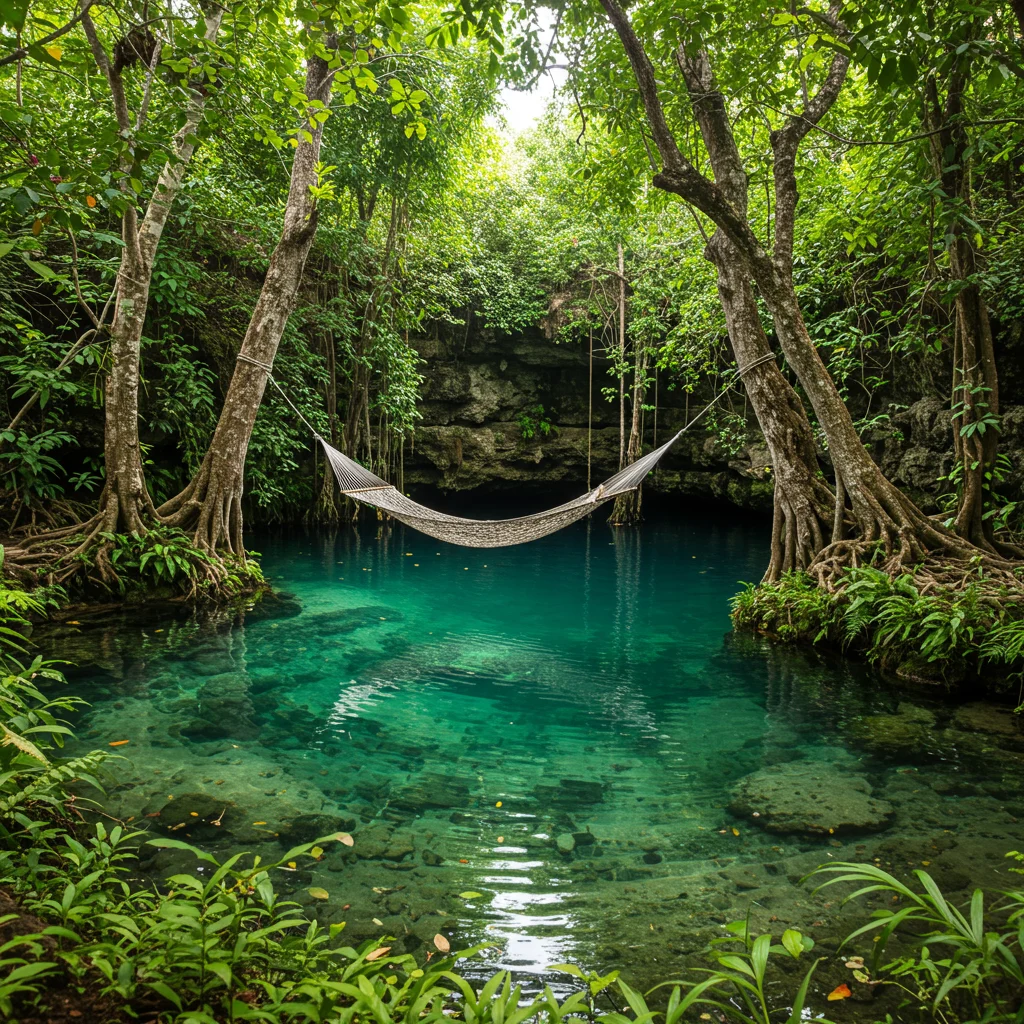
Gran Cenote: Tulum’s Most Famous Swimming Hole
Gran Cenote is perhaps the most iconic cenote near Tulum, renowned for its clear turquoise water and lush surroundings. Its accessibility and family-friendly amenities make it a favorite among both locals and tourists.
Why Is Gran Cenote So Popular?
The allure of Gran Cenote lies in its combination of open-air swimming areas, shaded caves, and abundant wildlife. Visitors are often greeted by turtles gliding gracefully through the water and birds nesting in the overhanging trees. The facilities are well-maintained, ensuring a comfortable visit for all ages.
Swimming and Snorkeling at Gran Cenote
The crystal-clear water at Gran Cenote offers exceptional visibility for swimmers and snorkelers. Gentle slopes and shallow areas make it accessible for beginners, while deeper sections invite more confident swimmers to explore. Snorkelers can marvel at underwater rock formations and the occasional fish or turtle passing by.
Cenote Calavera: The ‘Temple of Doom’
Cenote Calavera stands out for its dramatic entrance—a circular opening in the ground with ladders and a jumping platform. The name, meaning “skull,” refers to the three holes in the ceiling that resemble eye sockets.
What Makes Cenote Calavera Unique?
Unlike many other cenotes, Calavera’s main pool is accessed by climbing down a ladder or taking a thrilling leap from the edge. The atmosphere is energetic and youthful, drawing adventure-seekers looking for a memorable splash.
Cliff Jumping and Diving at Cenote Calavera
Cliff jumping is the highlight here, with platforms of varying heights to challenge your courage. The water is deep and refreshing, and experienced divers can descend into the dark caverns below. Surface swimmers can enjoy the interplay of sunlight through the skull-shaped openings.
Cenote Dos Ojos: A Diver’s Paradise
Cenote Dos Ojos is world-famous among scuba enthusiasts for its extensive underwater cave systems and extraordinary visibility. The name, “Two Eyes,” refers to the twin sinkholes connected by a cavernous passage.
Exploring the Underwater Caves of Dos Ojos
Certified divers can follow guides through the maze-like passages, marveling at stalactites, stalagmites, and the play of light underwater. The sensation of floating in the clear, cool water, surrounded by ancient rock formations, is nothing short of mesmerizing.
Snorkeling Tips for Dos Ojos
Even if you are not a diver, Dos Ojos remains a top snorkeling destination. Stick to the open areas and wear a wetsuit if you are sensitive to cooler water. Bring an underwater flashlight to illuminate hidden nooks and spot fish gliding through the submerged corridors.
Cenote Zacil-Ha: Family-Friendly Fun
Cenote Zacil-Ha offers a relaxed, welcoming atmosphere, making it a top choice for families and those seeking a laid-back swim. The facilities include shaded palapas, restrooms, and a snack bar.
Why Families Love Zacil-Ha
The shallow water, gentle entry points, and on-site amenities create a stress-free environment for parents and children. Lifeguards are often present, and the grounds are well-kept, ensuring a safe and enjoyable visit for everyone.
Ziplining Over the Cenote
One of Zacil-Ha’s main attractions is its zipline, which allows visitors to soar over the water before plunging in for a splashy landing. It’s a thrilling yet accessible activity suitable for both kids and adults.
Cenote Carwash (Aktun Ha): Off-the-Beaten-Path Gem
Cenote Carwash, also known as Aktun Ha, provides a more tranquil alternative to the busier sites. Its name comes from its former use as a car-washing spot for taxi drivers, but today it’s a haven for nature lovers and photographers.
Wildlife Encounters at Cenote Carwash
The cenote’s calm, shallow waters are home to turtles, freshwater fish, and even the occasional small crocodile (harmless to humans). The surrounding vegetation teems with dragonflies, butterflies, and birds, creating a lively backdrop for your swim.
Best Times to Visit Carwash Cenote
Early mornings are ideal for a peaceful visit, as the water is at its clearest and wildlife is most active. Weekdays tend to be quieter, providing an opportunity to enjoy the natural beauty without distraction.
Cenote Cristal & Cenote Escondido: Twin Treasures
Cenote Cristal and Cenote Escondido are located just across the highway from each other, offering two distinct experiences within walking distance. Both are surrounded by lush jungle and feature inviting, open pools.
What’s Special About These Neighboring Cenotes?
Cenote Cristal is known for its clear, open water and wooden jumping platform, perfect for a refreshing dip. Escondido, true to its name (“hidden”), feels more secluded, with fewer visitors and a peaceful, natural setting.
Activities at Cristal and Escondido
Both cenotes are excellent for swimming, snorkeling, and sunbathing. Escondido also features a rope swing for added fun. The jungle trails between the two offer a chance to spot wildlife and enjoy the tranquility of the forest.
Cenote Angelita: The Mysterious Underwater Cloud
Cenote Angelita is famous among advanced divers for its unique halocline—a visible layer of hydrogen sulfide that creates the illusion of a mystical underwater cloud at about 30 meters deep.
Diving Into Cenote Angelita’s Halocline
Descending into Angelita, divers pass from fresh water into a swirling, otherworldly mist, surrounded by submerged tree branches and eerie light. The experience is both haunting and beautiful, providing a sense of weightlessness and wonder.
Is Cenote Angelita Suitable for Beginners?
Due to its depth and unique conditions, Angelita is best reserved for experienced divers with appropriate certifications. Beginners may prefer to observe from the surface or choose shallower cenotes for their first dives.
Cenote El Pit: The Deepest Dive Near Tulum
Cenote El Pit challenges even seasoned divers with its dramatic depth, reaching over 120 meters. The vertical shaft and crystal-clear water create a sense of descending into the earth’s core.
What to Expect When Diving The Pit
Divers are treated to ethereal beams of sunlight penetrating the water, creating a surreal, cathedral-like ambiance. The site’s depth and visibility attract underwater photographers and thrill-seekers alike.
Safety Tips for Deep Dives
Diving The Pit requires advanced training and specialized equipment. Always dive with a certified guide, monitor your air supply closely, and adhere to recommended depth and time limits. Safety briefings and gear checks are essential before entering this breathtaking cenote.
Cenote Sac Actun: The World’s Longest Underwater Cave System
Cenote Sac Actun forms part of a vast network of underwater caves, recognized as the longest such system on the planet. Exploring its labyrinthine passages is a bucket-list adventure for divers and cave enthusiasts.
Exploring Sac Actun’s Labyrinth
Guided dives reveal a world of ancient rock formations, hidden chambers, and fossilized marine life. The sensation of gliding through these silent corridors, illuminated only by your flashlight, is both exhilarating and humbling.
Guided Tours vs. Independent Exploration at Sac Actun
Due to the complexity of the cave system, guided tours are strongly recommended for both safety and education. Experienced guides can interpret geological features and ensure you navigate the maze-like tunnels with confidence.
Cenote Nicte-Ha: A Hidden Floral Paradise
Cenote Nicte-Ha is a tranquil oasis adorned with blooming water lilies and surrounded by vibrant greenery. Its peaceful setting makes it a favorite among photographers and those seeking a quiet retreat.
Why Visit Cenote Nicte-Ha?
The cenote’s shallow, clear water is ideal for swimming, snorkeling, or simply floating among the lilies. The absence of large crowds contributes to a relaxing, almost meditative atmosphere.
Photography Tips for Nicte-Ha
For stunning photos, visit during mid-morning when sunlight filters through the trees, illuminating the flowers and water. Use a polarizing filter to capture the vivid colors and minimize glare on the surface.
How to Choose the Right Cenote for Your Adventure
With so many options, selecting the perfect cenote can feel overwhelming. Your choice will depend on your interests, skill level, and desired experience.

Best Cenotes for Swimming
If swimming is your main goal, open cenotes like Gran Cenote, Zacil-Ha, and Cristal offer easy access, gentle slopes, and ample space to enjoy the water. These locations are also family-friendly, with facilities that cater to all ages.
Top Spots for Snorkeling
For snorkeling, Dos Ojos and Carwash provide exceptional visibility and intriguing underwater landscapes. Bring your own gear or rent from on-site vendors for the best experience.
Where to Go for Scuba Diving
Advanced divers will find their paradise at El Pit, Angelita, and the cavernous passages of Sac Actun. These sites require appropriate certifications and, often, the guidance of experienced instructors.
Most Instagrammable Cenotes in Tulum
For those seeking the perfect photo, Nicte-Ha, Calavera, and the light-dappled caves of Dos Ojos deliver unforgettable backdrops. Arrive early to capture the serene beauty before other visitors arrive.
Safety Tips for Visiting Cenotes
While cenotes are generally safe, it’s important to follow guidelines to protect yourself and preserve these delicate environments.
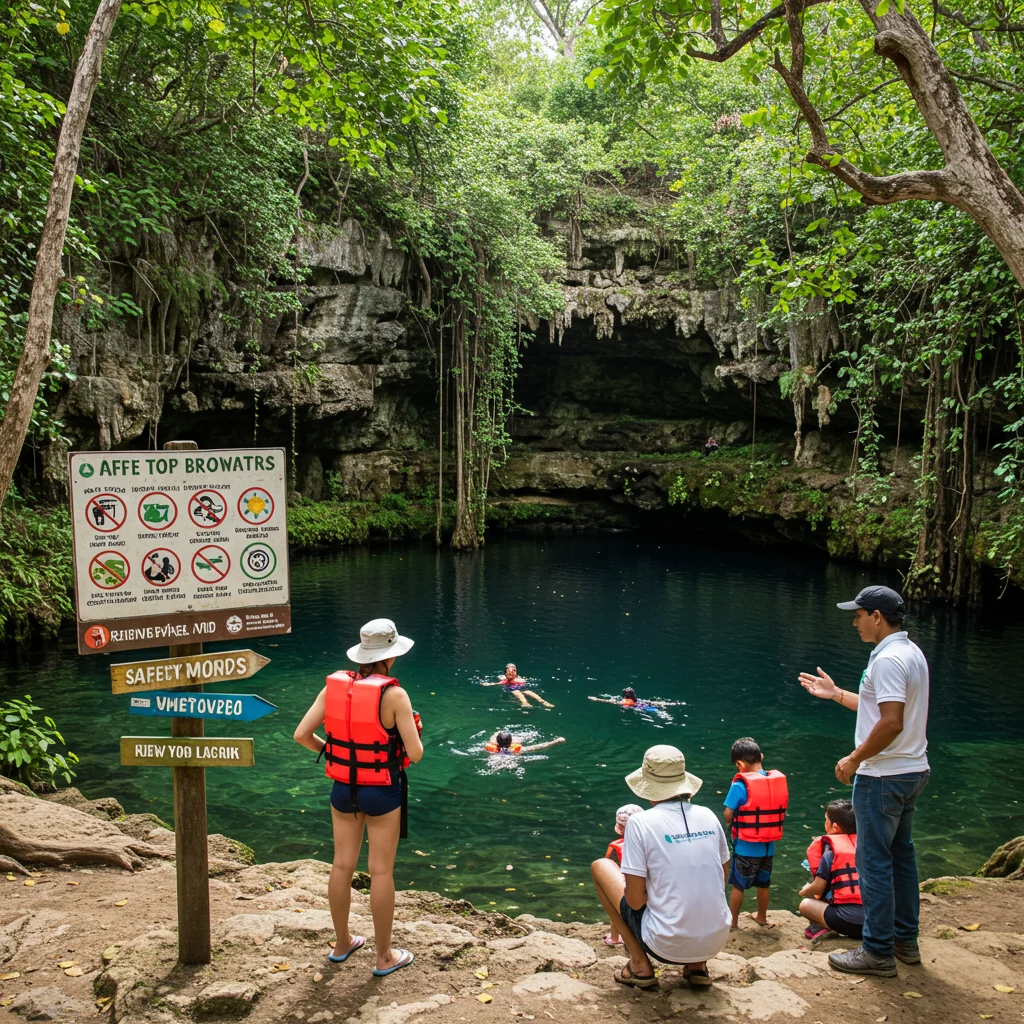
What Are the Rules and Regulations at Cenotes?
Each cenote has its own set of rules, but common regulations include showering before entry, prohibiting sunscreen or lotions, and restricting certain activities to protect the water quality. Always read posted signs and follow staff instructions.
How to Stay Safe While Swimming or Diving
Swim only in designated areas, respect depth markers, and avoid risky jumps or dives unless they are specifically allowed. Never swim alone, and always supervise children closely. For diving, use proper gear, check your equipment, and listen to your guide’s advice.
As experts often say:
“Take only memories, leave only bubbles. Cenotes are treasures of nature—treat them with care and respect so future generations can experience their magic.”
Eco-Friendly Practices: How to Respect Cenote Environments
Responsible tourism is essential to preserving the pristine beauty of Tulum’s cenotes. Small choices can make a big difference in protecting these fragile ecosystems.
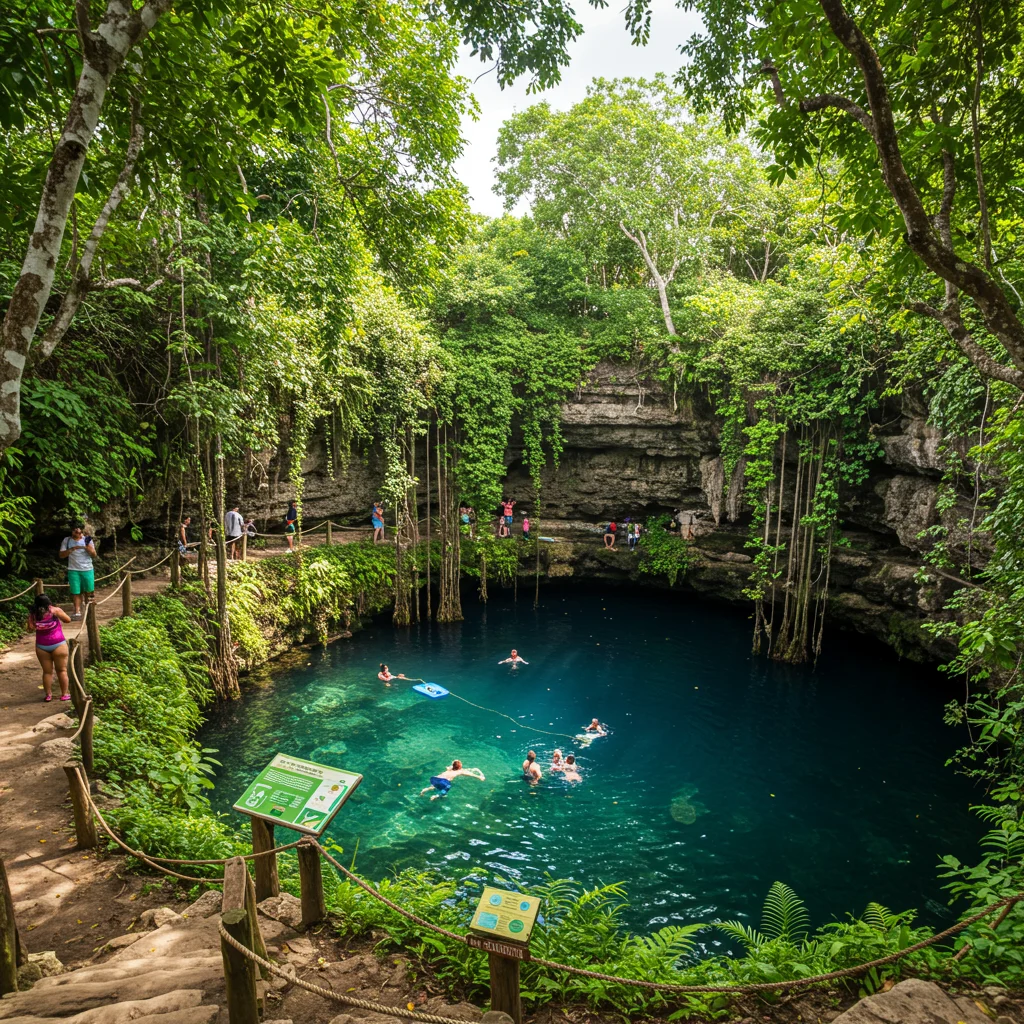
Why Is Sunscreen Banned at Many Cenotes?
Conventional sunscreens contain chemicals that can harm aquatic plants and animals. Even small amounts can disrupt the delicate balance of cenote ecosystems. For this reason, most sites require visitors to shower before entering the water and prohibit the use of any lotions or oils.
How to Leave No Trace When Visiting
- Take all trash and belongings with you
- Use only biodegradable products if necessary
- Stay on marked paths to avoid trampling vegetation
- Respect wildlife and avoid feeding animals
For more on responsible travel in Mexico’s natural attractions, see our insights from the Puerto Vallarta Cruise: Whale & Dolphin Watching Guide.
Cenote Etiquette: What Should You Know Before You Go?
Respectful behavior is as important as safety when visiting cenotes. Keep noise to a minimum, avoid playing loud music, and share the space considerately with others. Follow all posted rules, and remember that many cenotes hold sacred significance for local communities. A simple greeting and a smile go a long way in fostering goodwill with staff and fellow visitors.
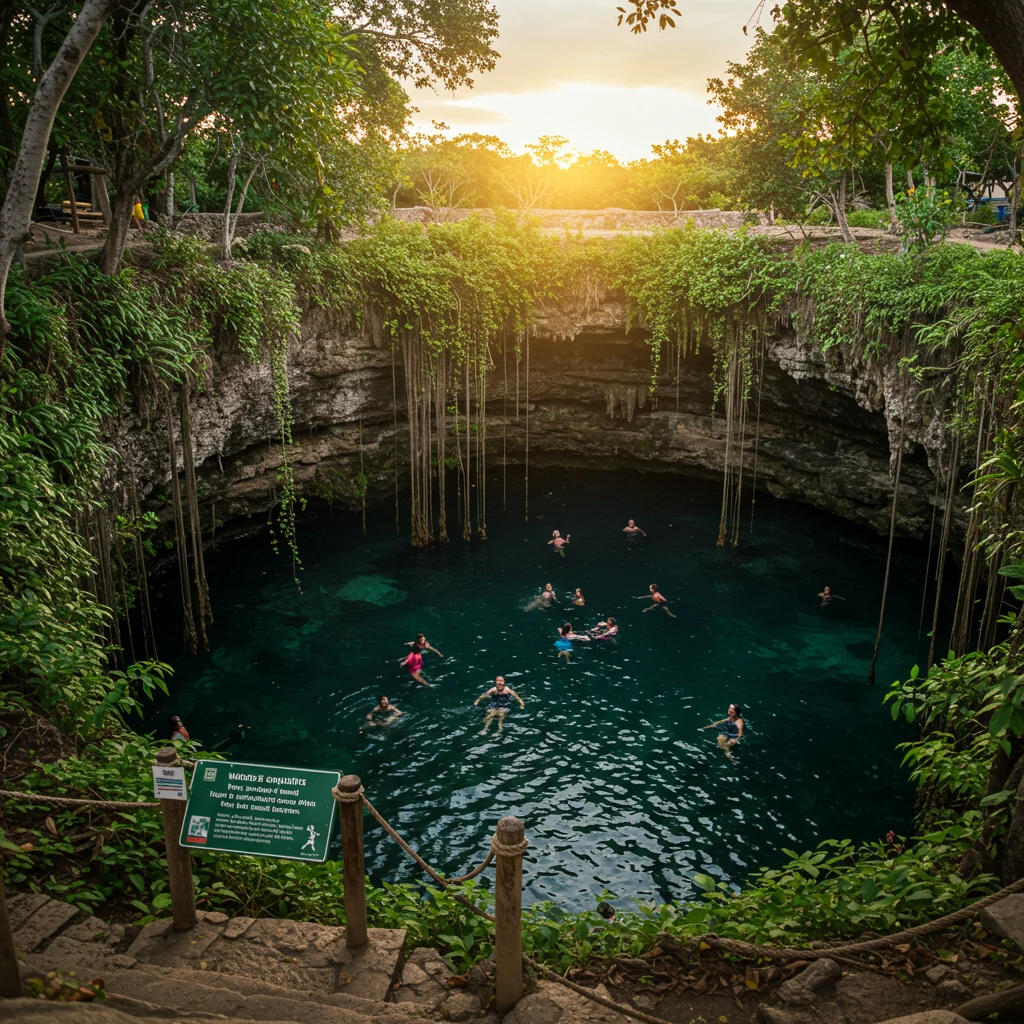
Facilities and Amenities at Tulum’s Cenotes
Facilities vary widely from one cenote to another. Some offer full amenities, while others are more rustic and natural. Knowing what to expect will help you plan accordingly.
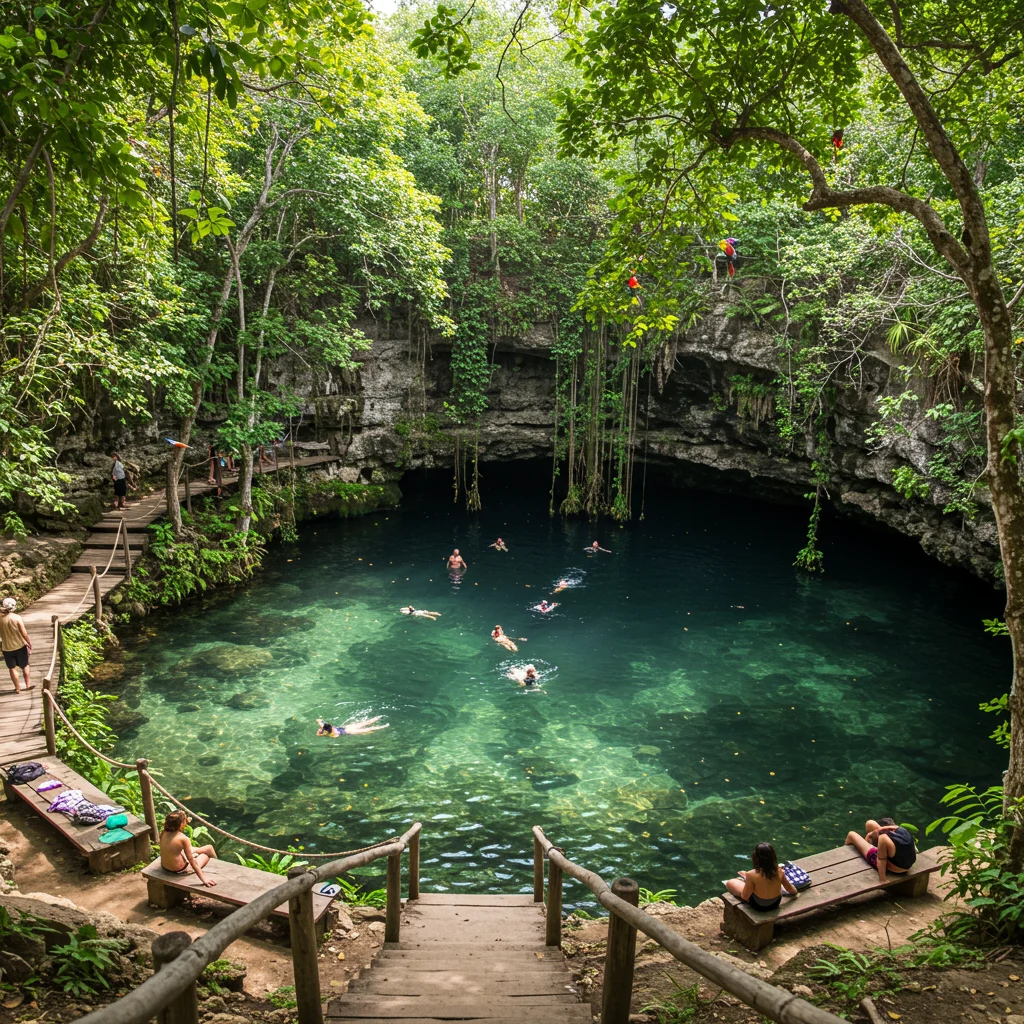
Are There Showers, Lockers, or Snack Bars?
Popular cenotes like Gran Cenote and Zacil-Ha provide showers, restrooms, and snack bars. Lockers are often available for storing valuables. Smaller or less developed cenotes may lack these conveniences, so plan to bring only essentials.
What Are Typical Entrance Fees?
Entrance fees range from 100 to 300 pesos per person, depending on the cenote’s popularity and facilities. Some sites offer discounts for children or locals. Bring cash, as credit cards are rarely accepted at the entrance.
Can You Rent Equipment On-Site?
Snorkeling gear, life jackets, and sometimes wetsuits are available for rent at many cenotes. Prices are usually reasonable, but quality and availability can vary. If you have specialized equipment or specific preferences, consider bringing your own.
What to Expect: The Cenote Experience Step by Step
Visiting a cenote involves a few simple steps, from arrival to relaxation. Being prepared helps you make the most of your adventure.
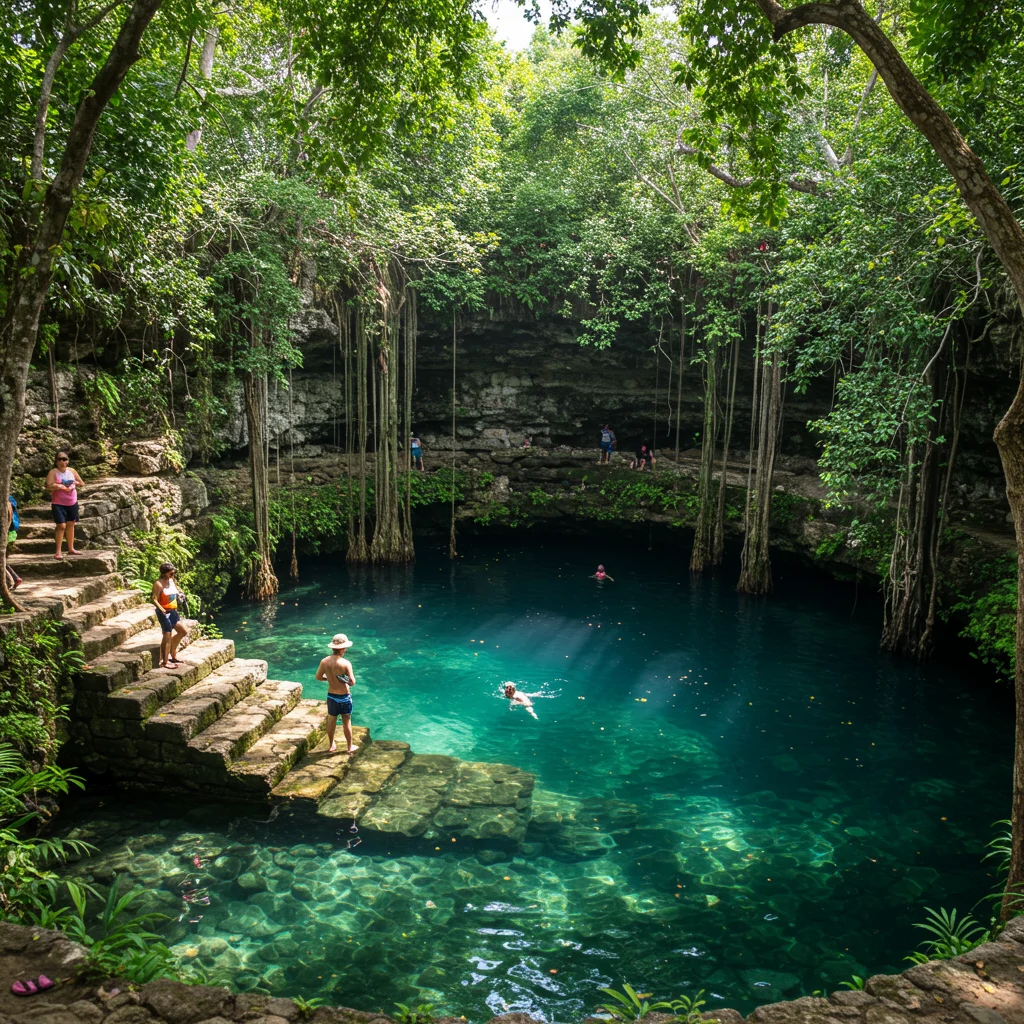
Arrival and Check-In Procedures
Upon arrival, you’ll typically check in at a front desk or ticket booth. Staff will provide wristbands, explain the rules, and direct you to the facilities. Parking is usually available nearby.
Changing, Rinsing, and Preparing to Swim
Most cenotes require visitors to rinse off in showers before entering the water. Changing rooms are provided at larger sites. Once ready, gather your gear and head to the designated entry points, taking care on slippery steps or rocks.
Post-Swim Facilities and Relaxation Areas
After your swim, rinse off again to remove any residual minerals. Many cenotes offer shaded seating, picnic areas, or hammocks for relaxation. Take time to savor the peaceful atmosphere and reflect on your experience.
Combining Cenote Visits with Other Tulum Attractions
Pairing cenote visits with other regional highlights can lead to a richer, more varied day in Tulum. The area’s proximity to Mayan ruins, beaches, and vibrant towns allows for flexible, rewarding itineraries.

Can You Pair Cenotes with Mayan Ruins or Beaches?
Absolutely. Many visitors choose to explore the Tulum Ruins in the morning, followed by a refreshing swim in a nearby cenote. Others head to the beach for sunbathing or water sports before retreating to the cool shade of a cenote. For more inspiration, our post on Teotihuacan Private Tour: Explore Mexico at Your Pace highlights how to blend cultural exploration with natural beauty.
Recommended Itineraries for a Day in Tulum
- Morning: Visit Tulum Ruins, then swim at Gran Cenote
- Afternoon: Lunch in town, explore Zacil-Ha or Carwash
- Evening: Relax on the beach or enjoy a local dinner
Custom tours are available through local providers, or you can find tours that combine multiple attractions for a seamless experience.
Frequently Asked Questions About Tulum Cenotes
We address some of the most common questions travelers have when planning a cenote adventure in Tulum.
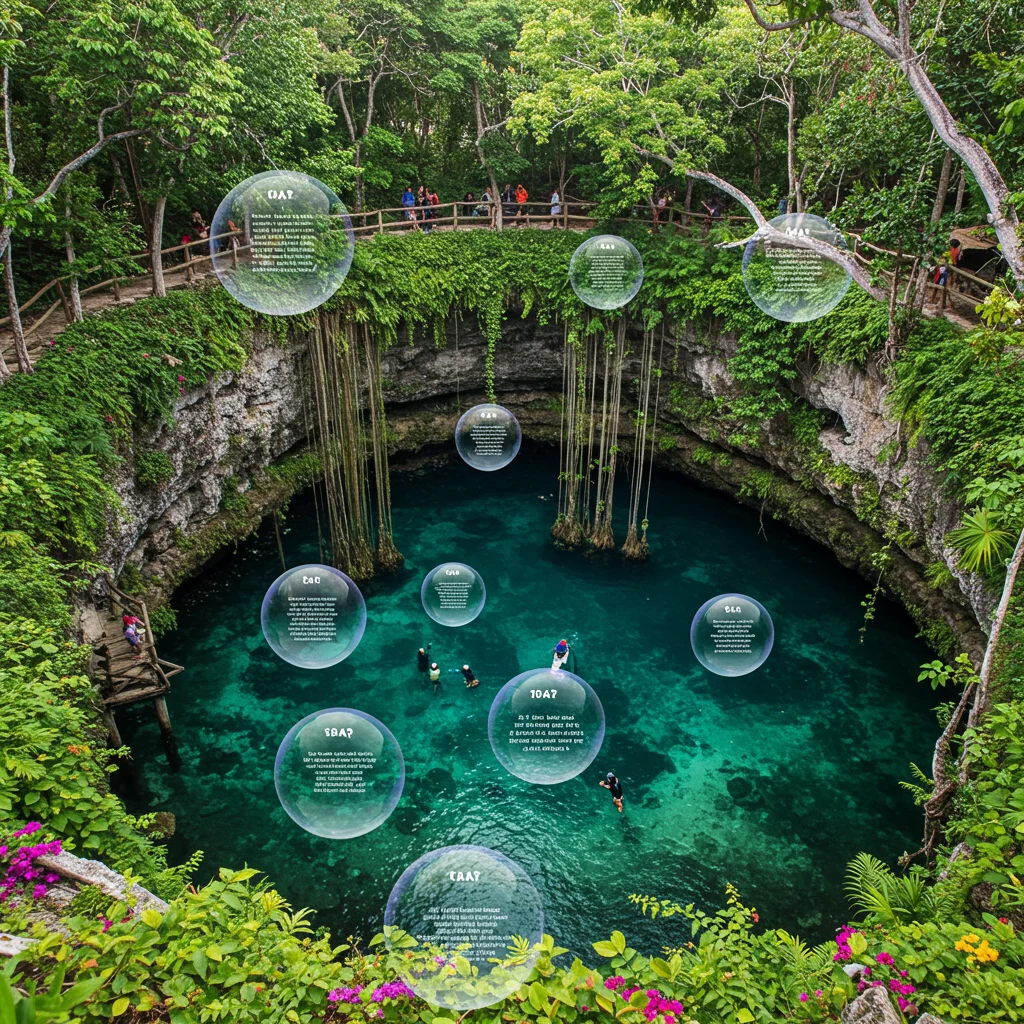
Are Cenotes Suitable for Kids and Families?
Yes, many cenotes are family-friendly, with shallow areas, gentle entry points, and lifeguards. Look for sites like Zacil-Ha and Cristal, which cater to visitors of all ages.
Can You Bring Food or Drinks to Cenotes?
Policies vary, but most cenotes allow small snacks and water. Glass containers and alcohol are typically prohibited. Some sites have on-site snack bars or picnic areas for your convenience.
What Wildlife Might You See at Cenotes?
Cenotes are home to turtles, freshwater fish, birds, and a variety of insects. With luck, you might spot iguanas basking nearby or colorful butterflies flitting through the trees. Always observe wildlife from a respectful distance.
For more ideas on unique aquatic experiences in Mexico, see our popular feature on the Xochimilco Dinner Cruise: Mexico City’s Floating Fiesta.
Final Tips for an Unforgettable Cenote Adventure
Arrive early to avoid crowds and enjoy the morning light. Bring cash for entrance fees and small purchases. Respect local customs and environmental guidelines. Most importantly, take time to appreciate the peace and natural beauty that make cenotes so special. With a little planning and an open mind, your cenote journey will be one of the highlights of your time in Tulum.
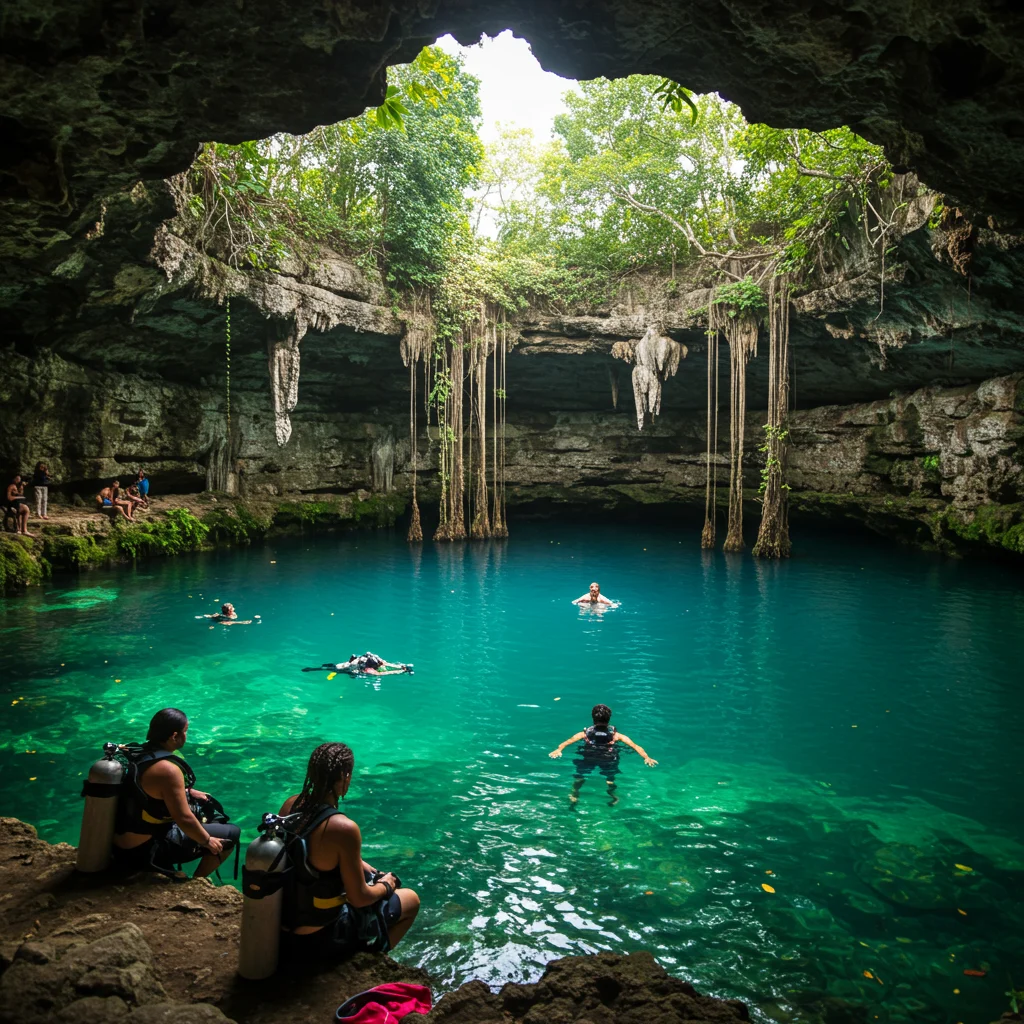
How to Book on Viator
Booking your cenote adventure is easy with trusted platforms like Viator. They offer a wide range of tours, from guided dives to family-friendly excursions, often including transportation and expert guides. Browse available options, read verified reviews, and secure your spot in advance for peace of mind.

Whether you want to plan your trip independently or join a group, Viator provides flexible booking and support, ensuring a seamless cenote experience from start to finish.
Conclusion: Start Planning Your Tulum Cenote Journey
Tulum’s cenotes offer a rare blend of adventure, serenity, and history, making them an essential part of any Yucatán itinerary. By understanding what makes each cenote unique and preparing thoughtfully, you’ll create lasting memories in some of Mexico’s most enchanting natural settings. For more expert travel inspiration and practical tips, visit Izase—your trusted source for unforgettable journeys.
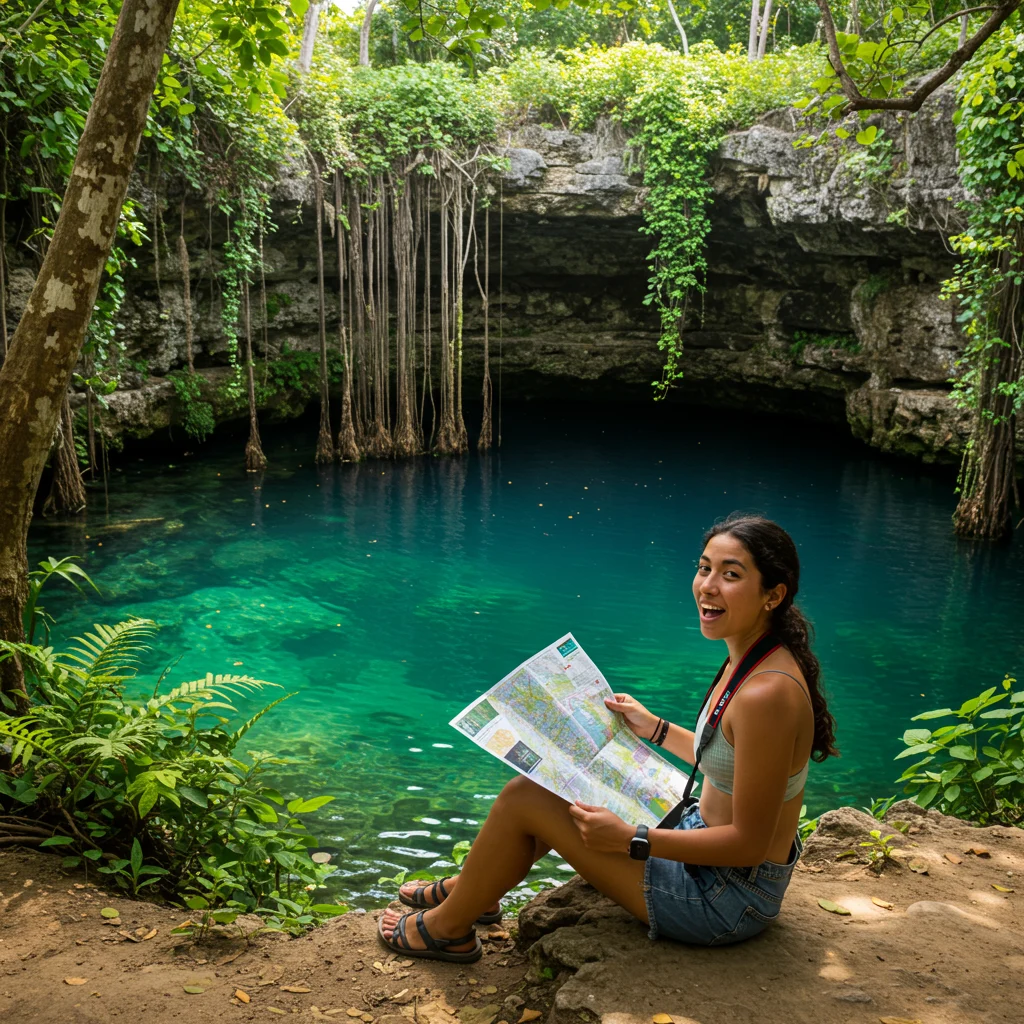
Disclaimer: This information is accurate to the best of our knowledge; however, there may be changes or mistakes. Please verify exact details on the Viator booking page.

